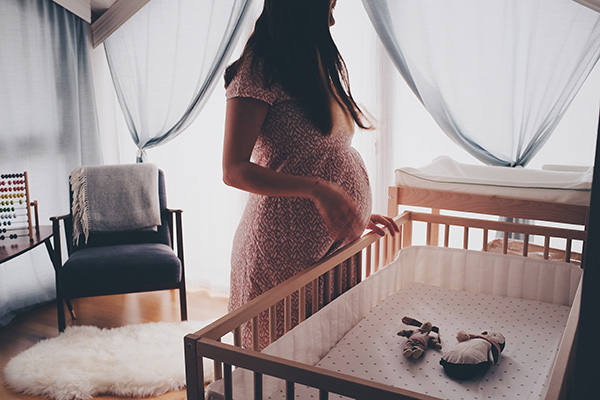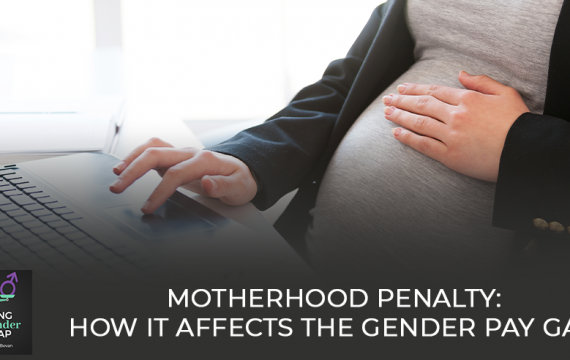Aside from the still unaddressed gender pay gap, women face yet another employment issue: motherhood penalty. Numerous studies show that women’s earnings and career are negatively impacted after giving birth to their first child. Mums also earn far less than those who don’t have any kids. Sherry Bevan presents the worrying statistics of women not getting the salary they are due just because they are mothers. She also provides several possible solutions to end this motherhood penalty, giving women the earnings they truly deserve.
—
Listen to the podcast here:
Motherhood Penalty: How It Affects The Gender Pay Gap
Welcome back to the show. Thank you so much for joining me. Do come back to read to the next episode and to make that easier, you simply need to subscribe to the show on your favorite podcast player. Now, let’s get into the show. In this episode, what I’d like to explore with you is how the motherhood pay penalty affects your gender pay gap, and as an organization, what can you do to prevent this?
The irony is I’m doing this episode the week after Equal Pay Day on the 18th of November 2021, as well as International Men’s Day on the 19th of November 2021. These are seemingly two major gender campaigns jostling for attention in the press and media at the same time. The motherhood penalty is a major contributor to the gender pay gap and to that Equal Pay Day because we know that women’s earnings dropped by almost half after the birth of their first child, so the price of being the primary carer is pretty high.
On the other side of the gender coin, we often hear younger fathers talking about their frustration of being stereotyped as the breadwinner and not being able to have the time to be that engaged father they want to be. Let’s start with the basics. When we talk about the motherhood pay penalty, what are we referring to? It’s the pay gap between working mothers and similar women without dependent children. It’s certainly not unique to the UK, and its existence has been recognized for some time now. This is different from the gender pay gap because that measures the pay gap between all women and all men in the workforce.
Many women who took maternity leaves delivered a negative impact on their careers, self-confidence, and self-esteem.
There was a study published by the TUC in 2016. This looked at a cohort of full-time working men and women born in 1970. The overall gender pay gap for that cohort is 34%, which I think is quite shocking looking at full-time working men and women, and yet, there’s still that gender pay gap of 34%. The research says that by the age of 42, mothers who are in full-time work are earning 11% less than full-time women without children.
It’s interesting because their research suggested it affects those mothers who had their first child when they were under 33. Women who had their first child at 33 or older experienced a wage bonus of 12% compared to similar women who haven’t had children. It also affects single mothers more than those who are in a couple at birth. There’s a much smaller, but still significant, gender pay gap between the childless women and men of 12% compared to 42% between the mothers and the fathers. That’s what we’re talking about when we refer to the motherhood pay penalty.
There’s a new study conducted by the University College London, which reveals that women earn 45% of what their salary would have been without having children in the first six years after giving birth. In that first year alone, salaries for new mothers dropped by 28%, equating to a fall of roughly 306 parents each month. The thing is, you’ve got to balance that against the cost of childcare for women who go back to work. The average cost of sending a child under two to a part-time nursery place for 25 hours per week is over £7,000 pounds in 2021, which is about £138 pounds a week.

Whenever the woman returned to her role full-time or part-time, that had a significant impact on the pay penalty that they faced. We know that caring responsibilities fall more heavily on women, and of course, that often means they’re less able to accommodate some working patterns and hours, and particularly so in the technology sector where we’re often expected to be online or delivering service to our clients who are looking for a 24/7 service, and of course, we need to be able to cover those hours on the support team and on the service delivery team.
What’s interesting though, is that women’s employment rates jumped sharply from about 90% to 75% after giving birth. The other fact is that the average weekly hours of work for those still in paid work is it falls around 40% to less than 30%. You can see that all of these factors are exacerbating that motherhood pay penalty, and in effect, opening up your gender pay gap.
There is another study conducted by researchers at London South Bank University that half of the women surveyed felt that taking maternity leave had a negative impact on their career and that in itself led to a negative impact on their confidence and their self-esteem. You may well have noticed that when you’ve had women coming back to work after maternity leave. What they report is that they have been refused bonuses, pay raises, and promotions.
Women are less likely to seek out training or higher-paying roles because they are more likely to experience career interruptions or reductions in working time.
The lead researcher at that piece of work done at the London South Bank University said that all women that gave feedback about maternity said that since they became pregnant, men in their companies had treated them differently. The most common microaggressions that were talked about were discriminatory comments about the women having a preggy brain when doing their work or comments about their pregnancy. I remember receiving those comments myself when I was pregnant at work, but there are also negative assumptions made about taking additional time off work upon return, being less available to attend meetings or conferences, or not wanting to be as ambitious and not wanting to take on those bigger roles.
This is what’s destroying women’s career prospects. It’s those microaggressions and discriminations. It’s that unconscious bias, stereotypes, prejudice, and organizational culture. When you start to destroy women’s career prospects like that, inevitably, you are going to affect the gender pay gap at your organization. Isn’t that sad and upsetting? As a mother myself, the more children you have, the greater the penalty that the woman pays, or the more time away from work.
For example, if you take a career break to look after your children, the longer it takes to catch up. What we have in this society is often the older women who perhaps are in their more senior roles then get caught in the sandwich between looking after younger children. We all know the impact that’s had to do with forced homeschooling, but also, these women are typically the ones who are caring for elderly parents and taking on the bulk of the responsibility there, so they’re being squished in two places.

What are the reasons for this motherhood pay penalty? Let’s spend a fair bit of time looking at that. Is it that women are less likely to seek out training or higher-paid roles because they know they’re more likely to experience career interruptions or reductions in working time? Maybe you feel that women are more likely to commit to more family-friendly employers, which sometimes are lower-paying. Often, women opt for part-time roles, which means perhaps less responsibility and, therefore naturally, less money or lower salary. What are employers doing to build traditional stereotypical expectations into their hiring and promoting decisions? Why is it that women’s work is undervalued and underpaid?
The report of the Institute for Fiscal Studies in 2018 found that by the time a couple’s first child is age twenty, many mothers earn nearly 1/3 less than the fathers. Generally speaking, people in paid work see their pay rise each year as they gain more experience, whereas the Institute for Fiscal Studies research shows that part-time workers miss out on those pay rises or on those gains. We already know that the vast majority of part-time workers are women, especially mothers of young children.
Those are the facts. That’s what we’ve got to live with. Those are the challenges that we’re facing that we need to tackle. What can you do about it? Here are some ideas and some recommendations. The first thing is to make flexible working work for everyone. Make it easier to apply for flexible working, so that it starts to become something for everyone, and not just a woman’s thing.
Women often opt for part-time roles, which means less responsibility and lower salaries.
In fact, we’re in a pivotal moment in corporate history because many organizations are starting to introduce the hybrid work model, but it is about making sure that the hybrid work model works for all. For more information on that, you can download a copy of my published white paper, which is all about The Impact of the Hybrid Revolution on the Gender Pay Gap in Technology.
Other recommendations for you or things for you to look at, and initiatives to start to implement is to look at increasing the take-up of shared parental leave. Often, we find that when we talk to fathers who’ve taken shared parental leave is that they suddenly have a whole new understanding and awareness of the pressures of being a full-time carer for a young child. That can affect how they behave, communicate, and the empathy that they will have for other women or mothers in the workplace.
Do you have role models who are taking advantage of flexible working and shared parental leave? How can you showcase those people, particularly if they’re working in senior positions to normalize that shared parental leave and flexible working so that women don’t see that it’s something that’s out of reach or is only acceptable for women?

What can you do for your returners? They are the women who are coming back to work after a career break or after maternity leave. Can you offer them return to work maternity coaching that can be helpful and powerful in helping them to assess their career, review their work-life balance, and how they make work and family work together so that they still feel empowered to take action, articulate their ambitions, and make progress in their career?
It is important to give your line managers or those with line manager responsibilities the opportunity to raise their awareness and to educate them on the benefits of having a diverse workforce of the additional challenges perhaps women might be facing and to make sure they’re aware of your robust criteria for job hires and promotions so that you minimize that unconscious bias as much as you possibly can.
In the hybrid world, it’s important that you are intentional in the way that you design your hybrid work model so that it’s inclusive and fair for everyone. You can also publish salary ranges on your job descriptions. We know that women tend to negotiate less when it comes to a salary, but if you publish the job salary range, they’re much more likely to negotiate and, therefore, much less likely to be at a disadvantage right from the get-go when they join your company.

There are more information, ideas, and thoughts to inspire you and look at the initiatives that you’re taking and decide which ones you’re going to focus on in 2022. You can get a copy of my white paper on The Impact of the Hybrid Revolution on the Gender Pay Gap in Technology at SherryBevan.co.uk/WhitePaper-Request.
I hope that’s been helpful for you to start to explore the motherhood pay penalty and how that might be affecting the gender pay gap in your organization. I hope you’ve enjoyed reading my thoughts and ideas on this. You can get more episodes of this show at SherryBevan.co.uk/Podcast.
If this has sparked a thought in your mind and you’d like to know what you can do to implement initiatives to reduce that motherhood pay penalty in 2022, please do book an exploratory chat with me.
That call will give you the opportunity to ask any questions you might have about the work that I do with technology and cybersecurity companies on attracting, developing, and retaining your female talent so that you close the gender pay gap. Email me at Sherry@SherryBevan.co.uk to book your call. I’ll be back for the next episode. Thank you for reading.
Important Links:
- The Motherhood Pay Penalty
- Women face ‘pay penalty’ of 45% in six years after giving birth to their first child, study shows
- How maternity leave stigma is undermining women’s careers
- White paper on The Impact of the Hybrid Revolution on the Gender Pay Gap in Technology
- Sherry@SherryBevan.co.uk
- https://www.tuc.org.uk/sites/default/files/MotherhoodPayPenalty.pdf
- https://www.daynurseries.co.uk/advice/childcare-costs-how-much-do-you-pay-in-the-uk
- Institute for Fiscal Studies: The gender pay gap in the UK: children and experience in work https://ifs.org.uk/publications/10356

